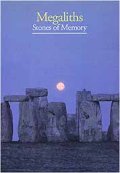<< Text Pages >> Domuztepe - Ancient Village or Settlement in Turkey
Submitted by davidmorgan on Friday, 12 October 2012 Page Views: 2543
Multi-periodSite Name: Domuztepe Alternative Name: KM 97Country: Turkey
NOTE: This site is 0.148 km away from the location you searched for.
Type: Ancient Village or Settlement
Nearest Town: Kahramanmaraş
Latitude: 37.322223N Longitude: 37.035248E
Condition:
| 5 | Perfect |
| 4 | Almost Perfect |
| 3 | Reasonable but with some damage |
| 2 | Ruined but still recognisable as an ancient site |
| 1 | Pretty much destroyed, possibly visible as crop marks |
| 0 | No data. |
| -1 | Completely destroyed |
| 5 | Superb |
| 4 | Good |
| 3 | Ordinary |
| 2 | Not Good |
| 1 | Awful |
| 0 | No data. |
| 5 | Can be driven to, probably with disabled access |
| 4 | Short walk on a footpath |
| 3 | Requiring a bit more of a walk |
| 2 | A long walk |
| 1 | In the middle of nowhere, a nightmare to find |
| 0 | No data. |
| 5 | co-ordinates taken by GPS or official recorded co-ordinates |
| 4 | co-ordinates scaled from a detailed map |
| 3 | co-ordinates scaled from a bad map |
| 2 | co-ordinates of the nearest village |
| 1 | co-ordinates of the nearest town |
| 0 | no data |
Be the first person to rate this site - see the 'Contribute!' box in the right hand menu.
Internal Links:
External Links:
Ancient Settlement in Kahramanmaraş Province, Turkey
The archaeological site of Domuztepe is located in south-central Turkey and is the largest known example of a settlement from the Late Neolithic (around 6,500-5,500 BC). This was a key period of change in prehistory, after the development of agriculture and prior to the emergence of the earliest cities. British Museum.
The settlement was found during an archaeological survey of the Kahramanmaraş region and has been the focus of an archaeological project since 1995. Domuztepe is currently being excavated by the University of Manchester and the British Museum under the sponsorship of the British Institute at Ankara. The excavation website.
You may be viewing yesterday's version of this page. To see the most up to date information please register for a free account.
Do not use the above information on other web sites or publications without permission of the contributor.
Click here to see more info for this site
Nearby sites
Click here to view sites on an interactive map of the areaKey: Red: member's photo, Blue: 3rd party photo, Yellow: other image, Green: no photo - please go there and take one, Grey: site destroyed
Download sites to:
KML (Google Earth)
GPX (GPS waypoints)
CSV (Garmin/Navman)
CSV (Excel)
To unlock full downloads you need to sign up as a Contributory Member. Otherwise downloads are limited to 50 sites.
Turn off the page maps and other distractions
Nearby sites listing. In the following links * = Image available
12.8km SSW 205° Birtlan Ancient Village or Settlement
19.7km SW 220° Coba Höyük* Ancient Village or Settlement
31.0km NNW 342° Marash* Ancient Village or Settlement
40.0km SW 232° Sam'al* Ancient Village or Settlement
46.3km E 87° Yavuzeli Dolmen* Burial Chamber or Dolmen
53.1km SSW 209° Yesemek Ancient Mine, Quarry or other Industry
69.2km W 268° Karatepe Ancient Village or Settlement
69.3km NNW 330° Direkli Cave Cave or Rock Shelter
70.0km ESE 114° Sehzade Höyük Ancient Village or Settlement
70.4km S 170° Oylum Hoyuk Ancient Village or Settlement
76.9km WSW 258° Castabala Ancient Village or Settlement
79.6km ESE 111° Zeugma Ancient Village or Settlement
83.2km ENE 70° Levzin Höyuk Ancient Village or Settlement
86.2km ESE 110° Surtepe Round Barrow(s)
89.9km WSW 245° Issus (Cilicia) Ancient Village or Settlement
92.0km S 189° Ain Dara* Ancient Temple
93.9km ESE 114° Mezraa Hoyuk Ancient Village or Settlement
98.6km ESE 117° Akarcay Tepe Ancient Village or Settlement
100.8km W 266° Anazarbus Ancient Village or Settlement
102.8km ESE 122° Carchemish* Ancient Village or Settlement
103.2km ESE 122° Carchemish, Syrian* Ancient Village or Settlement
104.1km S 188° Bit-Agusi Ancient Village or Settlement
104.1km WNW 282° Uzunoglantepe Relief Sculptured Stone
106.0km ESE 122° Shoukh Tahtani Ancient Village or Settlement
107.8km ENE 78° Girik Tepe Ancient Village or Settlement
View more nearby sites and additional images






 We would like to know more about this location. Please feel free to add a brief description and any relevant information in your own language.
We would like to know more about this location. Please feel free to add a brief description and any relevant information in your own language. Wir möchten mehr über diese Stätte erfahren. Bitte zögern Sie nicht, eine kurze Beschreibung und relevante Informationen in Deutsch hinzuzufügen.
Wir möchten mehr über diese Stätte erfahren. Bitte zögern Sie nicht, eine kurze Beschreibung und relevante Informationen in Deutsch hinzuzufügen. Nous aimerions en savoir encore un peu sur les lieux. S'il vous plaît n'hesitez pas à ajouter une courte description et tous les renseignements pertinents dans votre propre langue.
Nous aimerions en savoir encore un peu sur les lieux. S'il vous plaît n'hesitez pas à ajouter une courte description et tous les renseignements pertinents dans votre propre langue. Quisieramos informarnos un poco más de las lugares. No dude en añadir una breve descripción y otros datos relevantes en su propio idioma.
Quisieramos informarnos un poco más de las lugares. No dude en añadir una breve descripción y otros datos relevantes en su propio idioma.